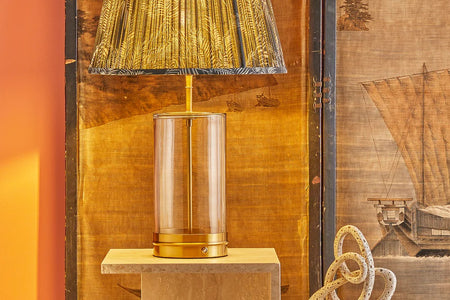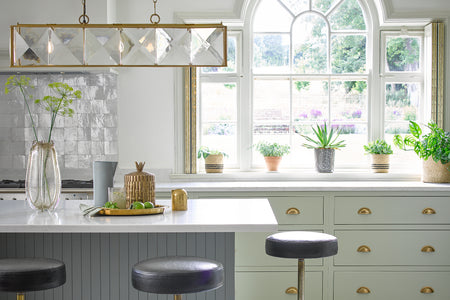 White is the most versatile colour in interior design… It can be a backdrop, a contrast, a highlight – and when you just want a bit of simplicity, there’s nothing to beat it.
White is the most versatile colour in interior design… It can be a backdrop, a contrast, a highlight – and when you just want a bit of simplicity, there’s nothing to beat it.
1) Mix different whites in a neutral scheme
We tend to think of white as the simplest colour– the ultimate neutral – but of course there are infinite shades of white. Bright whites reflect the most light and are great for opening up a space, while matt whites feel calm and soft. Whites with a hint of blue have a cool, icy feel, whereas whites with dashes of orange, yellow or even brown have a warmer, more relaxing vibe.

A gorgeous mix of whites and complementary neutrals in this bedroom by Arthty Ragupathy. Image: @av.home
So if neutral is your thing, then mixing and matching whites – along with off-white shades like cream, ivory and grey – means you can introduce warmth and homeliness to a space, while still keeping that simple, serene, minimalist style.
2) Use white objects for reverse colour pops
We’re used to thinking of white as a blank canvas – an unobtrusive backdrop that makes the pops of colour you introduce through furnishings or artworks all the more vivid.
But the reverse trick is just as effective: pops of white in an otherwise colourful scheme can be incredibly striking. Think white cushions on deep red sofas, or translucent alabaster wall lights against cobalt blue wallpapers…
Reverse colour pop: the Baltas standing lamp in white leaps out against the rich reds in this room
3) Use white to focus on texture
In interior design, texture is how something ‘feels to the eye’, and it’s an alternative to colour as a way to bring visual variety into a room. For example, a soft and fluffy white rug on a smooth white tiled floor provides a texture contrast even though the colour is the same. So in an all-white scheme have fun playing around with different materials and feels: limiting yourself in colour doesn’t mean limiting yourself in impact or design.

The Olly table lamp in white textured glaze – even in a neutral, white-based scheme the base’s gorgeous texture will make it stand out
4) Pair white with any other colour in a monochrome scheme
The classic, most perfectly simple monochrome scheme is of course black-and-white – which has a happy way of creating the most vivid possible contrast without making a space feel dark or confined.
But ‘monochrome’ can refer to any single colour, and the beauty of white is that it goes with absolutely all of them. With a bright blue or vibrant red you’ll get an energetic buzz, while a white-and grey scheme will feel harmonious and serene.
The Cheela table lamp in white, paired with a shade in jet stripes for maximum monochrome effect
5) Use white to showcase striking forms
Another important dimension in interior design is form – and white is a perfect colour for highlighting interesting shapes...
The Vitur table lamp in gesso white is our sculptural minimalist interpretation of a classic marble bust
Perhaps it’s because white is the colour we most associate with classical stone and marble sculpture, or possibly it’s that the simplicity of white means there’s nothing to distract us from admiring a curve – but whatever the reason, if you want to emphasise form, white is usually the way to go.
‘Gesso’ – Italian for chalk – is a white paint mixture which was originally made from chalk or gypsum, and used by artists to create a foundation for their artwork. The Sada table lamp in Gesso white is a work of art in itself
When developing our keeping it simple collection we had huge fun exploring the many possibilities of white for lighting, from sculptural table lamps with a hint of the avant garde, to the simplest, most elegant lights. Take a look at the full collection here.
Eternally charming - the Ma lamp in gesso white
At Pooky, we make beautiful lamps and shades for beautiful rooms. Browse our full range here.
See also:
The seven elements of interior design: Colour
The seven elements of interior design: Texture
Colour theories in interior design and lighting: White
Neutral lamp shades - and how to use them in your interior design
A guide to lampshade fabrics
How to use lighting to make a room look bigger















